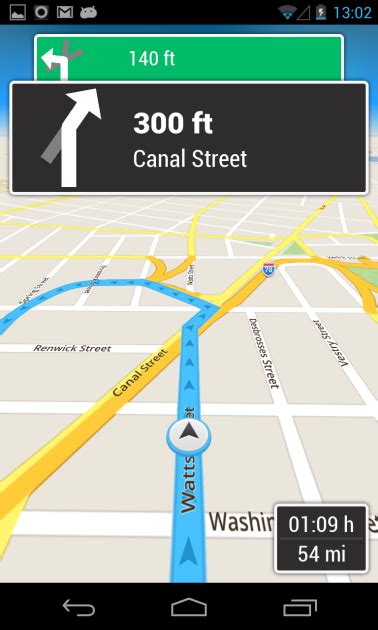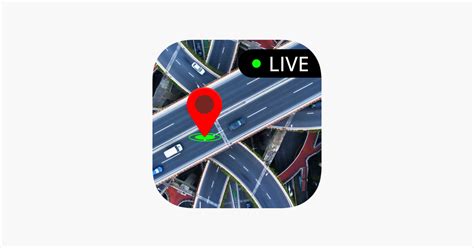Gps Maps And Navigation

GPS, an indispensable technology for modern travelers and commuters, has revolutionized the way we navigate the world. Global Positioning System (GPS) technology, coupled with sophisticated mapping and navigation systems, offers an unparalleled level of precision and convenience. This article delves into the intricacies of GPS maps and navigation, exploring their evolution, current capabilities, and future prospects.
The Evolution of GPS Maps and Navigation

The history of GPS maps and navigation traces back to the late 20th century when the United States Department of Defense developed the Global Positioning System. Initially intended for military purposes, GPS quickly found its way into civilian life, becoming a cornerstone of modern navigation.
The first GPS devices were bulky and often inaccurate, relying on a limited number of satellites for positioning. However, advancements in satellite technology and the increasing number of satellites in orbit led to a dramatic improvement in GPS accuracy. This evolution paved the way for the development of more sophisticated mapping and navigation systems.
The integration of GPS with digital maps and route planning software marked a significant milestone. Early mapping systems offered basic navigation, often relying on pre-computed routes. As digital mapping progressed, real-time traffic data and dynamic route planning became possible, offering users more efficient and reliable navigation experiences.
The widespread adoption of smartphones and mobile devices further accelerated the evolution of GPS maps and navigation. With built-in GPS receivers and mapping applications, users gained access to real-time navigation, turn-by-turn directions, and point-of-interest searches, all at their fingertips.
Current Capabilities of GPS Maps and Navigation

Today’s GPS maps and navigation systems offer an impressive array of features and capabilities, making them indispensable tools for travelers, commuters, and outdoor enthusiasts alike.
Precision and Accuracy
Modern GPS receivers, equipped with advanced signal processing algorithms and multiple frequency capabilities, deliver remarkable precision. Accuracy has improved significantly, allowing users to pinpoint their locations within a few meters, even in challenging environments.
The latest GPS systems can also leverage additional satellite navigation systems, such as Russia's GLONASS and Europe's Galileo, to enhance accuracy and reliability. This multi-constellation approach ensures consistent performance, especially in urban canyons and dense foliage areas where signal blockage can be an issue.
Real-Time Traffic Information
Real-time traffic data has become a cornerstone of modern navigation. GPS mapping applications continuously monitor traffic conditions, offering users up-to-date information on road congestion, accidents, and delays. This enables drivers to make informed decisions and choose alternative routes, saving time and reducing frustration.
By leveraging crowd-sourced data and advanced traffic analytics, these systems can predict traffic patterns and provide accurate estimated arrival times. This level of intelligence allows users to plan their journeys more efficiently and make better use of their time on the road.
Dynamic Route Planning
Dynamic route planning is a hallmark of contemporary GPS navigation systems. These systems can adapt routes on the fly, considering real-time traffic conditions, road closures, and user preferences. This ensures that users are always guided along the most efficient and convenient paths, avoiding unnecessary delays.
Advanced GPS mapping applications can also take into account factors such as fuel efficiency, toll roads, and scenic routes, allowing users to customize their journeys according to their specific needs and preferences.
Point-of-Interest Search and Navigation
GPS maps have evolved into powerful tools for locating and navigating to points of interest (POIs). Whether it’s finding the nearest gas station, restaurant, or tourist attraction, GPS systems can guide users accurately and efficiently. This feature is particularly valuable for travelers exploring unfamiliar areas.
Many GPS mapping applications offer comprehensive POI databases, allowing users to search for specific types of businesses or amenities. Additionally, these systems often provide ratings, reviews, and opening hours, ensuring users have all the information they need to make informed decisions.
Pedestrian and Outdoor Navigation
While GPS navigation is commonly associated with driving, modern systems also cater to pedestrians and outdoor enthusiasts. Specialized GPS devices and smartphone applications offer detailed maps and navigation for hiking, biking, and exploring urban areas on foot.
These systems provide turn-by-turn directions, elevation data, and trail information, ensuring users can navigate safely and confidently in diverse outdoor environments. Additionally, many outdoor GPS devices offer features like compasses, barometers, and altimeters, providing valuable context for off-road navigation.
The Future of GPS Maps and Navigation
The future of GPS maps and navigation is poised for further innovation and advancement. Several trends and developments are shaping the next generation of navigation systems.
Enhanced Satellite Constellations
The ongoing deployment of new satellite constellations, such as the BeiDou Navigation Satellite System (BDS) by China and India’s NavIC, will further improve GPS accuracy and reliability. These additional satellites will provide more precise positioning, especially in challenging environments like urban centers and mountainous regions.
Integration with Augmented Reality (AR)
Augmented reality (AR) technology is expected to play a significant role in the future of GPS navigation. By overlaying digital information onto the real world, AR can provide users with more intuitive and immersive navigation experiences. AR-enhanced GPS systems could offer real-time directions projected onto the user’s field of view, improving situational awareness and reducing the need for constant screen attention.
Machine Learning and AI
Machine learning and artificial intelligence (AI) are poised to revolutionize GPS mapping and navigation. By analyzing vast amounts of data, these technologies can predict traffic patterns, identify potential hazards, and offer more personalized route recommendations. AI-powered systems can learn from user behavior, adapting to individual preferences and driving styles over time.
Integration with Autonomous Vehicles
As autonomous vehicles become a reality, GPS mapping and navigation will play a critical role in their operation. High-precision GPS, coupled with advanced mapping and localization technologies, will enable autonomous vehicles to navigate safely and efficiently. GPS will provide the backbone for precise positioning, while detailed maps will offer the necessary context for decision-making and obstacle avoidance.
Enhanced User Experiences
Future GPS mapping and navigation systems will prioritize user experiences, offering more intuitive interfaces and seamless integration with other technologies. Voice-activated navigation, gesture controls, and natural language processing will make navigation more accessible and convenient. Additionally, systems will provide more personalized experiences, offering tailored recommendations and suggestions based on user preferences and past behavior.
Conclusion
GPS maps and navigation have come a long way since their inception, and their evolution shows no signs of slowing down. With continued advancements in satellite technology, mapping accuracy, and data analytics, the future of GPS navigation is bright. As we move forward, GPS will remain a vital tool, empowering us to explore and navigate our world with confidence and precision.
How accurate are GPS maps and navigation systems today?
+Modern GPS receivers can achieve accuracy within a few meters, especially when leveraging multiple satellite navigation systems like GLONASS and Galileo. This level of precision ensures reliable navigation for various applications.
What is the role of real-time traffic information in GPS navigation?
+Real-time traffic information is crucial for dynamic route planning. It allows GPS systems to adapt routes based on current traffic conditions, helping users avoid congestion and delays. This feature significantly enhances the efficiency and reliability of navigation.
How do GPS maps benefit outdoor enthusiasts and pedestrians?
+GPS maps offer detailed navigation for outdoor activities like hiking, biking, and urban exploration. They provide turn-by-turn directions, elevation data, and trail information, ensuring a safe and enjoyable experience for outdoor enthusiasts.



